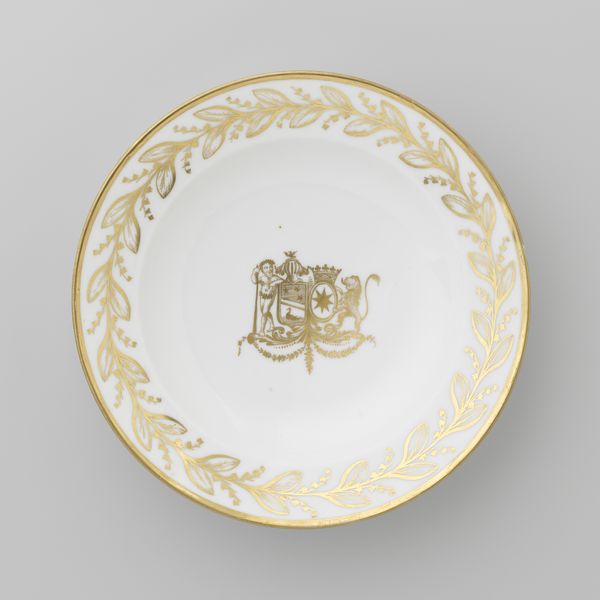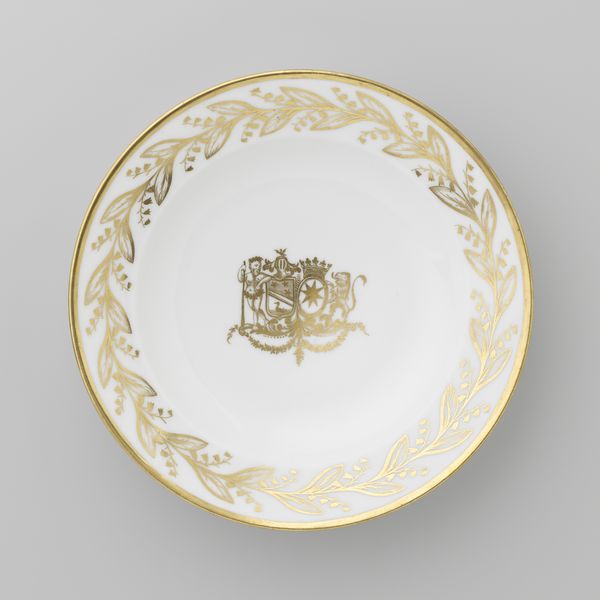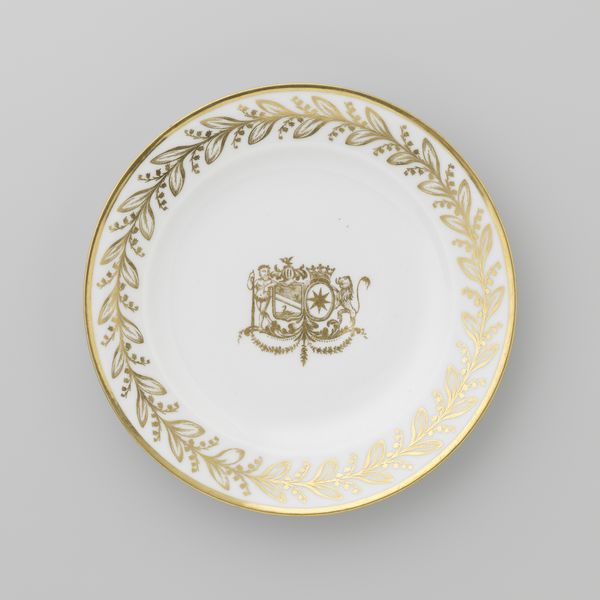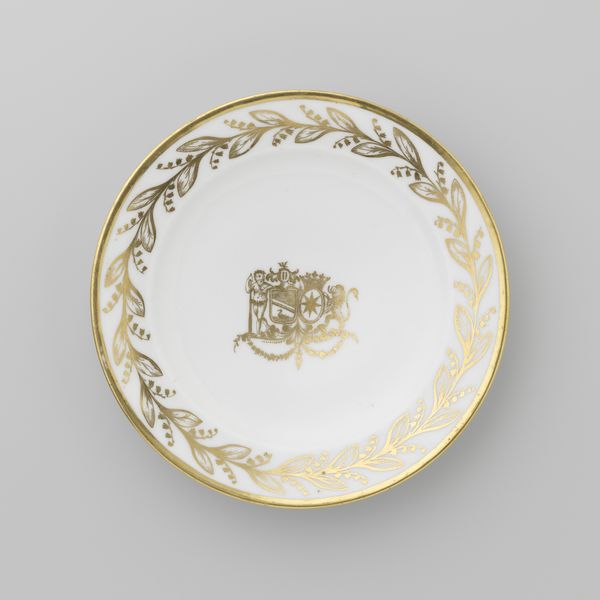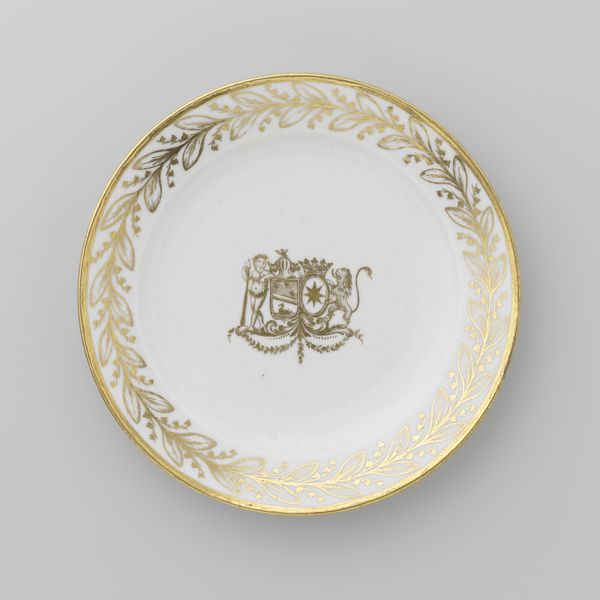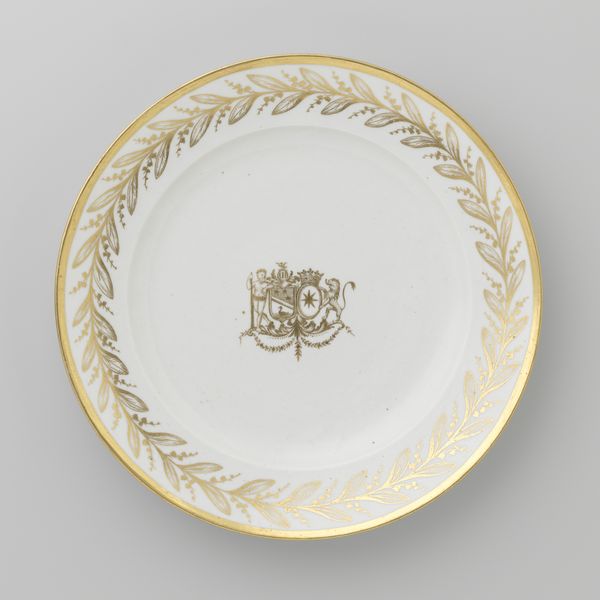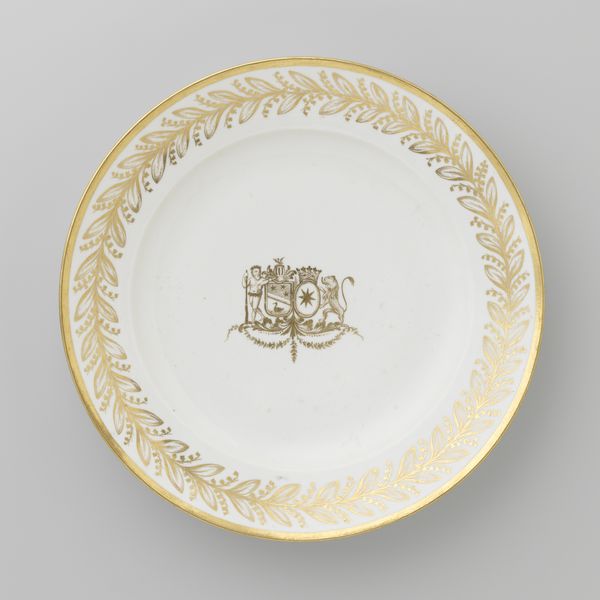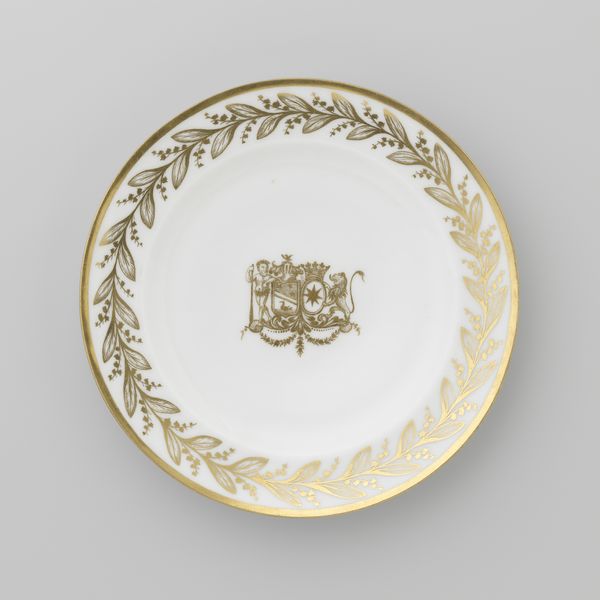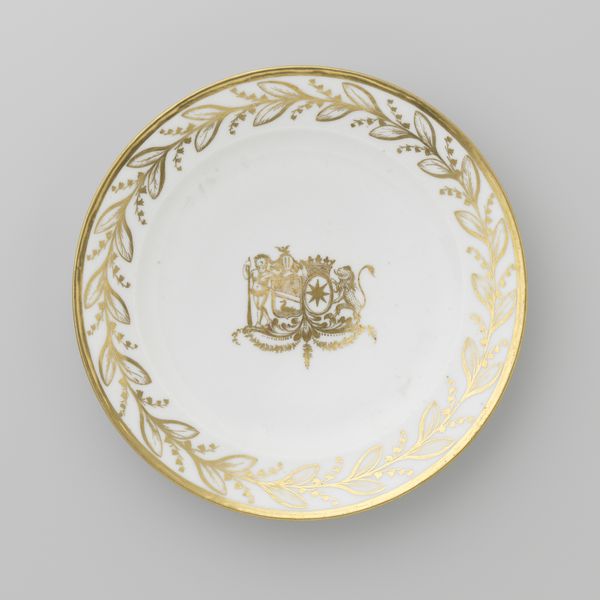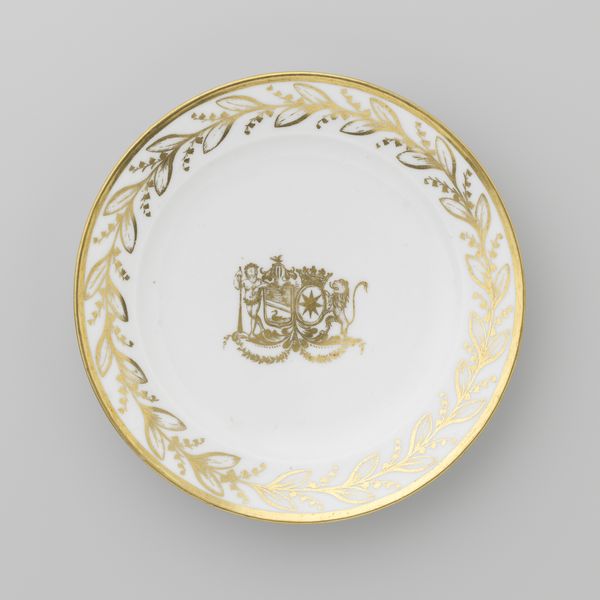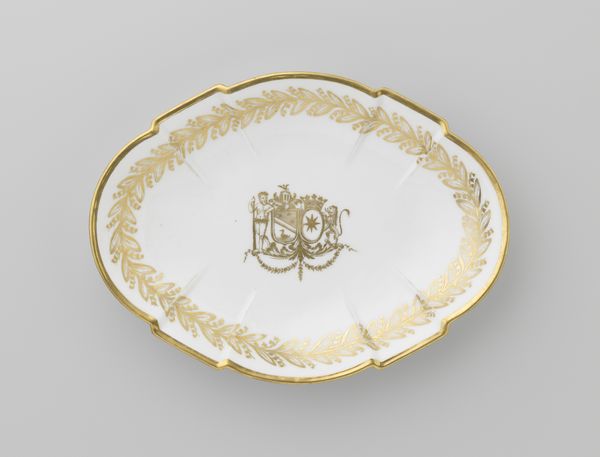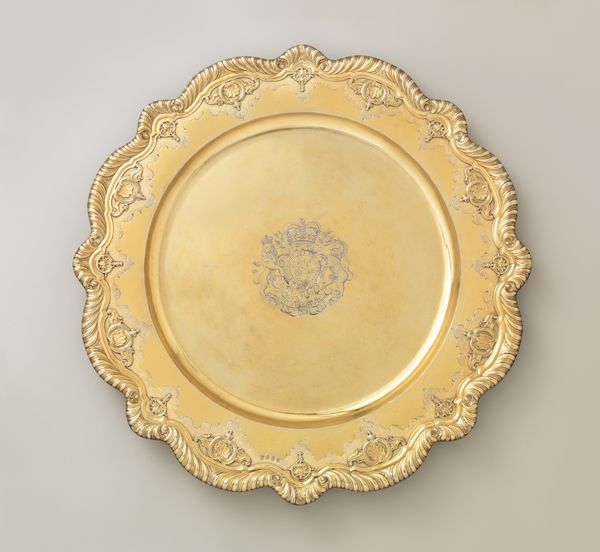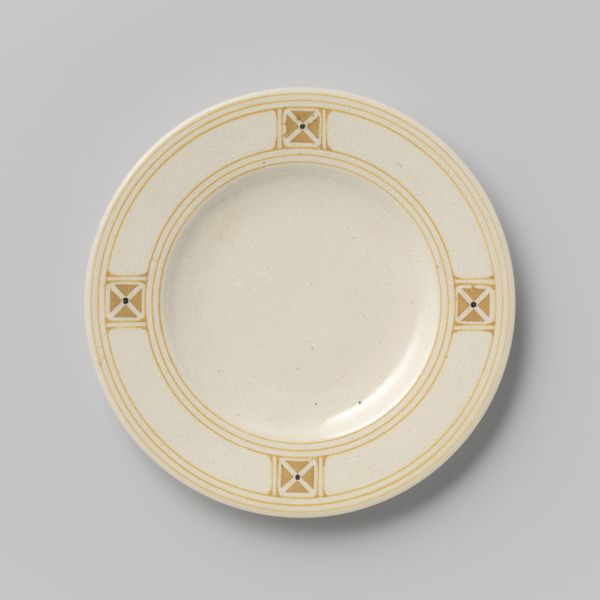
Plate with the coat of arms of Hendrik Peter Godfried Quack and Isabella Gertraud von Carnap c. 1790 - 1800
0:00
0:00
eblancheron
Rijksmuseum
ceramic, earthenware
#
neoclacissism
#
ceramic
#
earthenware
#
stoneware
#
decorative-art
Dimensions: height 3.1 cm, diameter 22 cm, diameter 13.9 cm
Copyright: Rijks Museum: Open Domain
Curator: Here we have a ceramic plate, likely earthenware, dating from around 1790 to 1800. It features the coat of arms of Hendrik Peter Godfried Quack and Isabella Gertraud von Carnap. It's a delicate piece, typical of late 18th-century decorative arts. Editor: Oh, it’s pretty! It feels almost fragile, doesn’t it? The gold leaf design—is that a laurel wreath around the rim? So restrained and elegant. Curator: Precisely. The production process would have involved skilled ceramicists and gilders. Examining such pieces helps us understand the societal value placed on craftsmanship and heraldry, even in everyday items. The materials themselves—clay, glazes, gold leaf—were traded and consumed across Europe. Editor: It does make you think about the labor involved. Imagine the steady hand needed to paint that heraldic crest! It’s funny to think of such a fancy plate holding, say, a simple piece of cheese. Or perhaps it never saw food at all; just sat pristine on a shelf, a display of status. What do you make of the little winged figure in the arms, by the way? It looks almost cheeky against the lion. Curator: That cheeky figure, alongside the lion and the star motif, all contributed to communicating specific messages about the family’s lineage, virtues, and aspirations within the prevailing social order. Each emblem held symbolic weight and added layers of meaning that would be well understood at the time. Editor: Meaning it has that stuffy, formal vibe too, haha! It does though seem so light, it almost gives off a playful vibe to me despite the grandeur. But you know, looking closer at it, I also get a strong sense of longing for a time gone by. It evokes this gentle nostalgia... Curator: I agree; it’s easy to project our modern feelings onto an object so connected with the past. Understanding the labor that created it and the context in which it existed provides valuable insights into the economic and social dynamics of the period, making it more than just a pretty dish. Editor: That it is indeed. For me, it’s been the way it tickles your senses. Looking closely I like the gentle colors and how delicate its creation is! A fascinating reminder of art history!
Comments
No comments
Be the first to comment and join the conversation on the ultimate creative platform.
